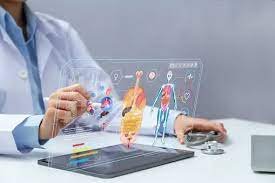5 Essential Supplies You Need for Cutting-Edge Medical Research
Medical research is the bedrock on which advances in healthcare are built. It’s the symphony of innovation, meticulous experimentation, and groundbreaking discoveries. However, behind the grandeur of medical breakthroughs lies a preparation of the nitty-gritty, the meticulous detailing of supplies necessary for successful experiments and analysis. Whether you’re a seasoned medical researcher, a new lab recruit, or a biobank operator seeking to streamline processes, sourcing the right supplies is critical to your work.
From the procurement of specialized tissue samples to the nuances of laboratory consumables, every aspect of the research chain is pivotal. In this article, we’ll explore five indispensable supplies every medical researcher should have in their arsenal. These unsung heroes enable the precision and rigor vital to our quest for better treatments and a deeper understanding of diseases.
-
Specialized Tissue Samples
One of the most crucial supplies for medical research is the tissue sample. Whether formalin-fixed paraffin-embedded (FFPE) tissue for immunohistochemistry (IHC) or fresh-frozen human tissue for genomic studies, the quality and sourcing of tissue can make or break a study’s outcomes.
Sourcing high-quality tissue samples often involves collaboration with biobanks or tissue procurement organizations. These partners ensure that the tissue provided meets strict quality control standards and ethical guidelines. Tissue samples play a fundamental role in various areas of medical research, from cancer studies to regenerative medicine.
Researchers must consider several factors when acquiring tissue samples, including histopathological assessment, patient consent, and the alignment of sample characteristics with the study’s objectives. This initial pre-selection process is critical and can save significant time and resources downstream in the research process. Optimal Recovery
-
State-of-the-Art Laboratory Equipment
No medical research facility is complete without state-of-the-art laboratory equipment. Equipment such as mass spectrometers, next-generation sequencers, and automated liquid handlers allow for high-throughput analysis, precision, and accurate data generation.
The choice of equipment can significantly impact the research’s scalability, efficiency, and the width of data that can be collected. For instance, the use of cutting-edge imaging machines combined with advanced analysis software can provide intricate details at the cellular level, offering unprecedented findings in anatomical research.
Investing in quality laboratory equipment ensures that the collected data is reliable and paves the way for novel methodologies and future research directions. Researchers should stay informed about the latest equipment advancements and consider regular upgrades to maintain their competitive edge in the field.
-
High-Quality Reagents and Kits
Reagents and kits are the laboratory’s workhorses. These supplies, from basic molecular biology research to sophisticated diagnostics, are instrumental in sample processing, reaction procedures, and data interpretation. High-quality reagents and kits from reputable vendors are non-negotiable for reproducible results and minimizing experimental variabilities.
In the realm of medical research, reagents and kits come in various forms and for numerous applications. DNA and RNA extraction kits, polymerases for PCR, or antibodies for western blotting are just a few examples of essential supplies. The growing trend towards precision medicine and personalized healthcare has led to the development of increasingly specialized reagents that cater to the unique needs of specific research projects.
Researchers should pay close attention to reagents’ expiration dates and storage conditions, as these can significantly impact their performance. Developing strong relationships with suppliers and understanding the composition of reagents can also provide insights into the rationale behind experimental protocols.
-
Cutting-edge Computational Tools and Software
Modern medical research is not just about benchwork; computational tools and software have become integral components of the research ecosystem. With the exponential growth of data, especially in fields like genomics and imaging, the ability to manage, analyze, and visualize data efficiently is essential.
The right software can accelerate research by facilitating interdisciplinary work across various departments, from data management systems to bioinformatics tools. Tools such as gene expression analysis software or molecular modeling platforms can help researchers derive patterns, relationships, and predictive models from complex datasets.
Mastering computational tools and bioinformatics is increasingly becoming a sought-after skill for medical researchers. Integrating these tools into research workflows early on can help select the most appropriate methodologies and prepare data for publication or sharing with collaborators.
-
Consumables and Disposables for Day-to-Day Research Activities
While the focus often falls on large-scale equipment and specialized samples, the consumables and disposables ensure the daily operations of a research facility run smoothly. Items like pipette tips, syringes, cell culture media, and microtiter plates are frequently used, requiring meticulous selection to avoid compromising experiments and data integrity.
The choice of consumables can affect not only the efficiency of experiments but also the cost-effectiveness of the research. Researchers should be mindful of factors such as contamination risk, assay compatibility, and product consistency.
In an era where sustainability is at the forefront of global discourse, the responsible disposal of single-use plastics, which constitute a significant portion of consumables, also merits serious consideration. Initiatives aimed at recycling or using biodegradable alternatives can have a significant, positive environmental impact.
Become an Expert Researcher Today
The supplies and tools outlined in this article are just the tip of the iceberg regarding the full spectrum of resources required for medical research. The rapidly evolving nature of healthcare and the biotechnological landscape constantly introduce new supplies and technologies that challenge researchers to stay informed, adaptable, and innovative.
Investing time and resources into sourcing the right supplies and equipment is not just about the success of current projects but about fostering a research environment that cultivates continuous improvement and breakthroughs. Whether optimizing tissue sampling processes or adapting to the latest computational analyses, staying ahead in research means keeping a well-stocked and adaptable toolkit. By prioritizing these essentials and continually seeking innovative advances, medical researchers can ensure their work is on the cutting edge of discovery and, importantly, on a path to positively impact global health.







